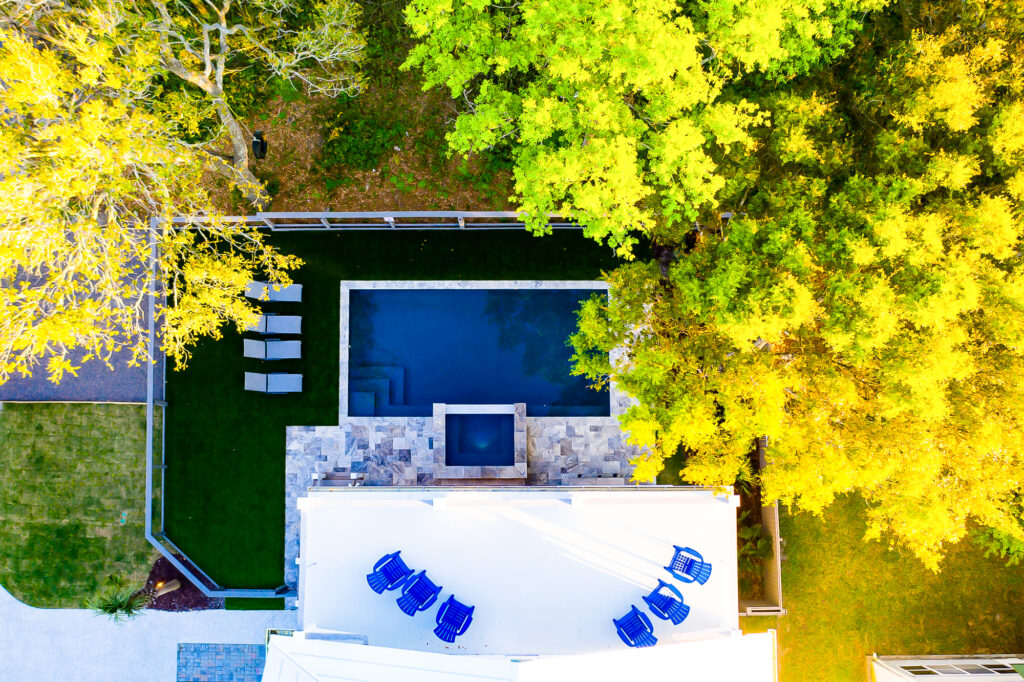
Photo courtesy of Coastal Creek Design
Navigating the pool construction process can be an exhilarating journey. It can also feel a little confusing for those outside the industry who don’t know the lingo. Our team at Aqua Blue Pools aims to help educate you each step of the way throughout the pool-building process, including the terms that are most helpful to know. Understanding the terminology used in the pool design and construction industry can enhance communication with your pool building partners and help create a smoother process overall.
Common Pool Construction Terms
This glossary of common terms will help you better understand your pool design team and communicate more effectively throughout the process.
A
Automatic Pool Cleaner: A device or system that cleans debris from your pool interior automatically, saving time and effort.
Automatic Pool Cover: A motorized cover that can be opened and closed over your pool with the push of a button, adding important safety measures to your pool and protecting your waters from debris and temperature shifts.
B
Bond Beam: A structural component that provides support and stability to the pool shell. The pool beam is typically located at the top of the pool wall where it meets the deck or coping. It serves as a reinforcement element that helps to distribute the weight and forces exerted on the pool shell, such as the weight of the water and the pressure from the surrounding soil.
Bullnose Coping: Rounded coping that wraps over the pool’s edge on the water side , used for finishing exposed decking edges.
C
Cantilever Coping: Pool coping that extends over the edge of the pool beam, giving a seamless transition between the pool edge and decking.
Centrifugal Pump: A pump used in pool systems to move water by centrifugal force.
Check Valve: A component that ensures pool water flows in only one direction.
Composite Decking: A durable, low-maintenance decking material made from a mix of wood fibers and plastic.
Chemical Feeder: A smart device that automatically dispenses chemicals (chlorine, bromine and/or pH-adjusters) into a pool or spa at predetermined intervals.
Chlorinator: A device used to automatically dispense chlorine into the pool water to maintain proper sanitization levels.
Coping: The 12” – 24” border around the outside perimeter of the pool. The coping sits on top of the pool beam. The most popular types of material used for coping are stone, brick and concrete.
Corrosion: Deterioration of materials due to chemical reactions, often a concern in pool environments. Caused by issues related to the water’s chemical balance, acidic products or “soft” water.
D
Diatomaceous Earth (D.E.): A porous substance used in certain types of pool filters to trap impurities.
Decking: The area surrounding your pool, which can be made of various materials like concrete, stone or wood.
Diverter Valve: A valve that changes the direction of water flow in pool plumbing systems and can divert water between bodies of water in pool/spa combinations.
E
Elevated Pool: A style of pool that sits above the surface of your yard, requiring little to no excavation.
Excavation: The process of digging out an area for the construction of an inground pool or semi-inground pool.
F
Fiberglass: A material used to construct pre-molded pools, known for its durability and smooth finish.
Filter: A key component of pool equipment that removes impurities from the water. Sand, cartridge or D.E. filters are commonly used in pools and spas.
Fire Features: Design elements that incorporate fire, often used in modern pool designs for aesthetic appeal. Examples include fire pits and fire bowls.
Flow Rate: The rate at which water moves through your pool system, usually measured in gallons per minute (gpm).
Freeform Pool: A pool designed in an irregular, natural shape, often with curves.
G
Geometric Pool: Pools designed with straight lines and sharp angles, offering a contemporary look.
Grout: A mixture used to fill gaps, especially in tile work around pools. While liquid in nature, grout dries as an insoluble surface.
Gunite: A blend of concrete and sand sprayed over a rebar framework, using a high-pressure hose. Gunite is known for its superior structural strength.
Gutter: A channel around the edge of the pool that collects overflow water.
H
Hardscapes: The non-living elements in your pool area, such as patios, decks, and pathways.
Heat Exchanger: A device in pool heaters that transfers heat from the heat source to the pool water.
Heater: Equipment used to heat the pool or spa water to a comfortable temperature. Heaters can be electric, fossil fuel or solar-powered.
Hydrostatic Relief Valve: A safety feature installed on the floor of a pool to prevent damage to the pool’s structure from groundwater pressure.
I
Inlet (Pool Jets): Inlets, also known as returns, are an opening on either the pool walls, floor or both – where filtered water is returned to the pool from the filtration system.
Infinity Pool: Also known as a vanishing-edge pool, this pool style is designed so that one or more edges appear to merge with the surrounding landscape, creating a visual effect of water extending to the horizon.
Inground Pool: A pool style constructed below ground level, involving excavation and permanent installation. Inground pools can be made from concrete, fiberglass, or vinyl and customized in shape and size.
L
Liner: A vinyl covering that provides a waterproof barrier in certain types of pools.
M
Main Drain: An outlet for water, typically located at the deepest point of the pool or hot tub/spa. These drains do not actively drain but rather connect the pool to the filtration and circulation systems.
P
pH Level: A measure of the acidity or alkalinity of pool water, which is crucial for maintaining proper water balance and it helps to protect your pool’s equipment and other components in the system. Additionally, it helps keep the pool’s interior finish in top shape.
Plunge Pool: A smaller pool designed for cooling off or relaxing rather than swimming or exercising, often a popular choice for smaller yards.
Pool Pump: The heart of the pool’s circulation system, moving water through the filter and back into the pool.
Pump Capacity: The amount of water a pump can move, typically measured in gallons per minute (gpm).
R
Raised Bond Beam: A section of the pool wall that is vertically higher than other pool walls, often used for aesthetic appeal or mounting features like waterfalls.
Retaining Wall: A structure that holds back soil or water, often used in pool landscaping. Retaining walls are typically used on sloping and uneven terrain.
S
Salt Chlorinator: A device that converts salt into chlorine for pool sanitization, offering an alternative to traditional chlorine.
Scupper: A spout-like water feature or opening that allows water to flow from a structure, such as from a spa to a pool.
Skimmer: A device installed at the pool’s surface level to remove floating debris and help circulate water through the filtration system.
Solar Pool Cover: A cover that protects your pool and uses solar energy to heat the water.
T
Tanning Ledge: A shallow, flat, shelf-like area in the pool, perfect for lounging in the sun and water.
Tile Band: Decorative tiles at the waterline of a pool that can be an aesthetic choice as well as serve to protect the pool’s edge.
W
Weir: A floating barrier in a pool skimmer that regulates water flow and helps trap debris.
Z
Zero-Entry Pool: A pool designed to have an entry that gradually slopes from the deck into the water, similar to a natural beach.
Let’s Dive Into Your Custom Pool Project
As the Lowcountry’s premier custom pool builder, Aqua Blue Pools is ready to help you realize the pool of your dreams. Since 1991, our team has built pools in a range of styles for residential and commercial clients in South Carolina. We are proud to work closely with our clients to create and execute impressive custom projects built to last. Contact us today to begin planning your oasis!


